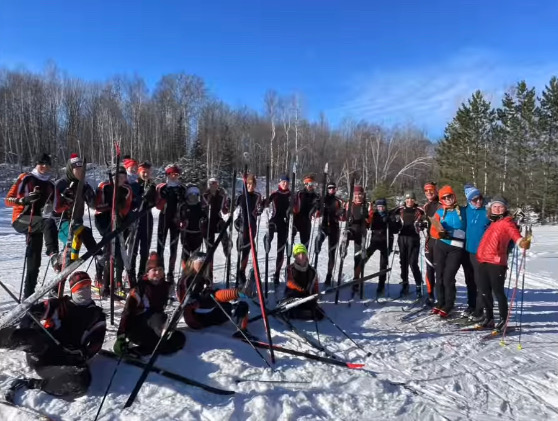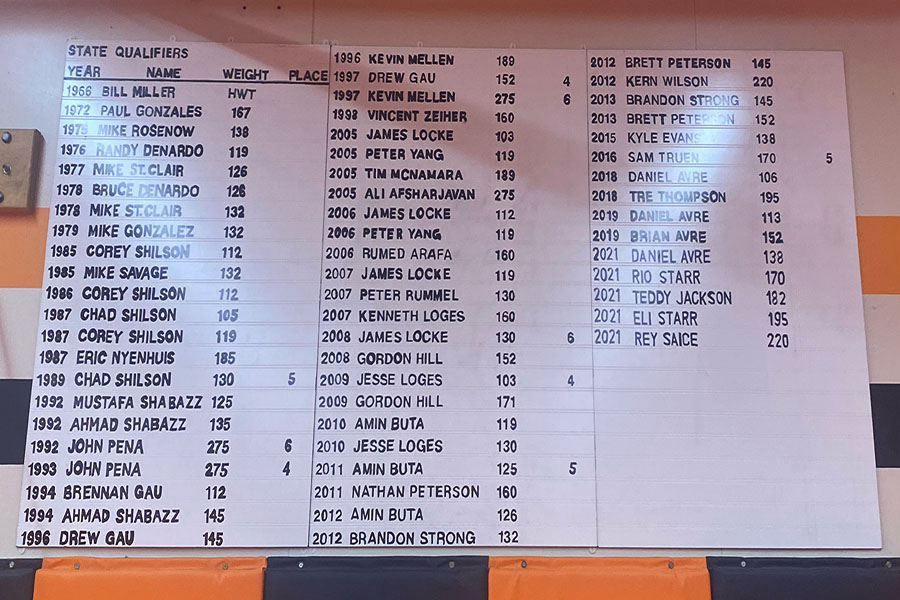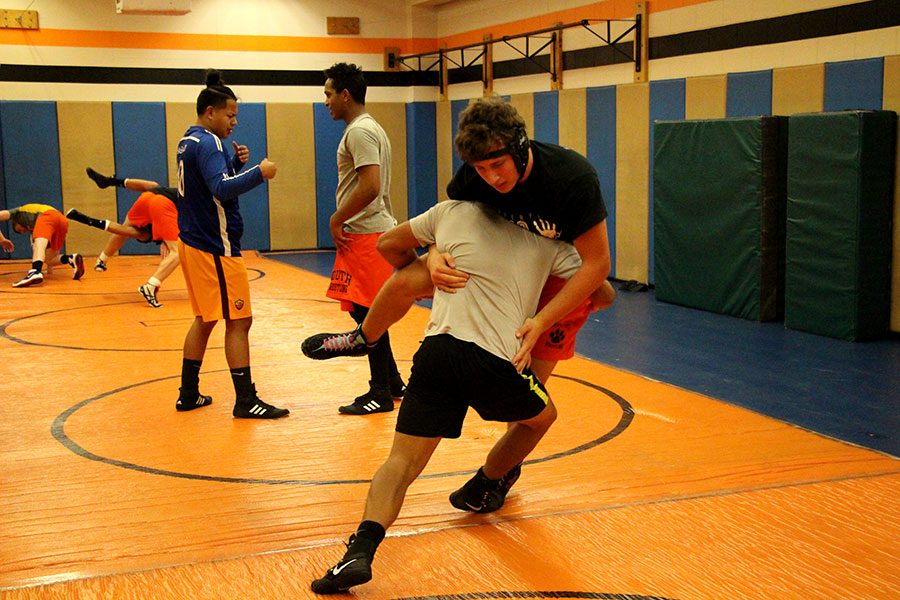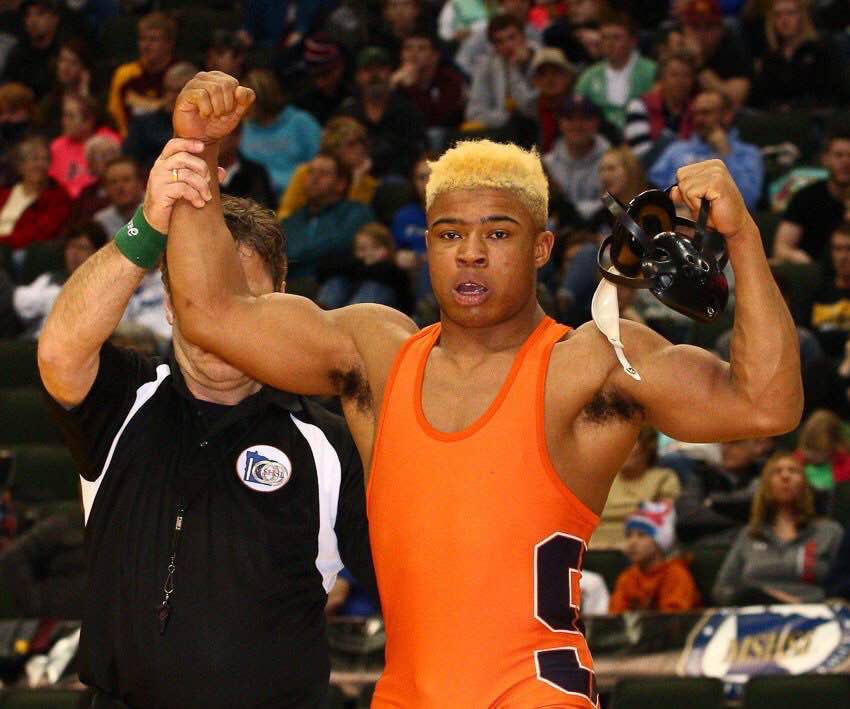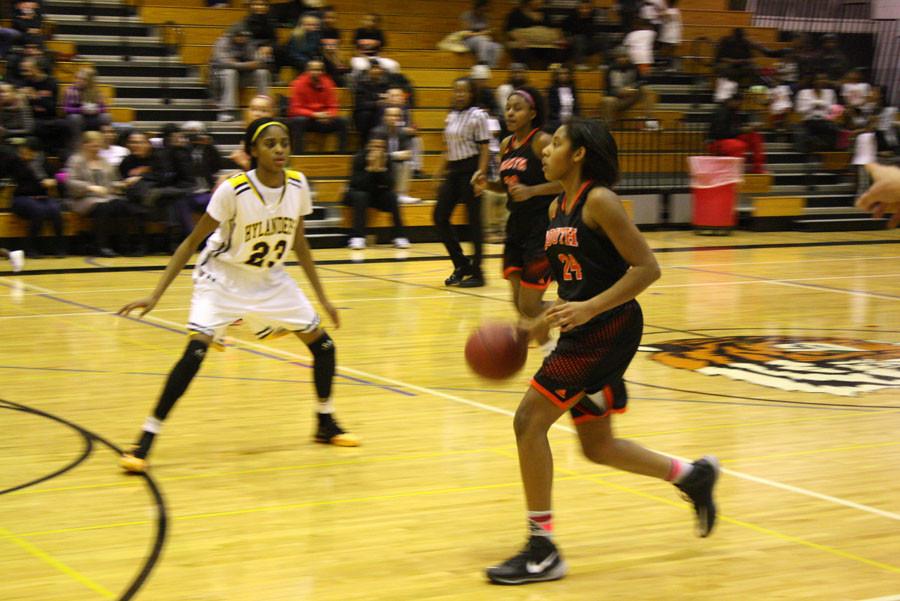“I think it’s the greatest sport for learning lessons about yourself, about pushing yourself to the limit, about how to deal with adversity, how to deal with nerves, how to deal with your failures as well as your victories, how to celebrate your teammates victories and defeats as well,” raved Mark Sanders. This would be high praise coming from anyone, but as South’s athletic director, his words have extra weight.
To many, it might come as a surprise that the sport in question is wrestling. For some, the violence puts them off of wrestling. For others, it is the minimalist uniform, and for still others it the one-on-one contact experienced in the ring.
South’s history of wrestling goes back to 1946, when the team played at a varsity conference meet. The team has since moved up, claiming the Minneapolis City Champions title in 2007, and keeping hold on it since.
“I was kind of big coming into freshman year,” shared senior, Mark Akpaka, who started wrestling in his sophomore year, and is now a captain. “A friend, Elijah Ellison, introduced me to wrestling, and I made it through the year, even though it was the hardest thing I’ve ever done.”
Wrestling is a grueling sport, just another thing on top of school work, and home, and all the other stresses students have. Which leads to the inevitable question: why? what would make somebody commit time, and energy to this sport in particular?
“I want to say just because I can hurt people, but it’s not really that,” said junior Brandon Strong, who is a captain with Akpaka, “I just like being able to learn a sport, and beat people, I guess.”
Among the sports hierarchy at South, wrestling seems to be near the bottom of the social ladder.
“Some people say it’s soft, but I really don’t really care what they say, because I know what type of sport it is. If they think it’s a soft sport, I doubt they could beat anybody within the sport,” stated Strong defensively.
“I think the people that are into wrestling are into wrestling, and the people who don’t know much about it think it’s kind of a silly sport,” Sanders said, “you know, they see these guys out there wearing a singlet. A lot of kids don’t want to go out for the sport because of the uniforms they wear.”
A singlet is the name for a wrestling uniform. It is a one-piece pair of shorts with suspender-like straps going over the shoulder, generally made of a spandex-like material. Besides the headgear to protect the ears, and the wrestler’s undergarments, the singlet is the only thing the wrestler wears in a match.
Concerns about wrestling stretch beyond the uniform, though. A big component of wrestling is cutting weight, an intensive, fast paced method for losing weight that involves reducing meal size and increasing exercise.
“You start at a certain weight . . . you’re running, and stuff, and trying to get your body in shape. Some people on the other teams do stuff that are like throw up, but you don’t do that because it’s unhealthy,” stated Strong. Strong cites hard work in practice, and eating smaller meals per day as strategies that he uses to get his weight down. “That’s how I do it. And that’s how other people on my team do it.”
Weight cutting and the pressures placed on athletes to lose weight put wrestlers at a higher risk of excessive dieting.
“There are horror stories of back in the day, long ago,” Sanders remembered, “kids would take diuretics, they would take laxatives, all those things you can’t do. They’re all outlawed.”
Today, South wrestling takes precautions to keep away the negative effects of weight cutting, and focus on the healthy competition.
At the beginning of the wrestling season, all of the athletes are given a skin fold analysis test to determine their lowest body weight recommendation as compared to 7% body fat, which is the lowest percentage possible. Once the student’s number is determined, both a medical doctor, and the parent or guardian of the athlete has to sign off on it as the lowest weight that student can wrestle that year.
However, weight cutting is not the top concern for South’s wrestling coach, Joe Morgan.
“We don’t preach weight cutting, we certainly do have kids that will cut some weight, but we don’t really have too many kids that are cutting all that much weight,” Morgan stated, “we talk to them on a regular basis on the types of food they’re eating, types of food they should be eating, types of food they shouldn’t be eating. Things that are real high in fats and sugars you should stay away from, you know, your fruits, your vegetables, basic food groups, but the one thing that breeds the discipline is that you don’t get to eat as much as you might want to.”
Another worry for wrestlers, parents, and coaches to think about is skin care. With the amount of skin exposed during a wrestling match, opportunities to contract skin diseases such as ring worm, athlete’s foot, and certain strains of herpes.
“Before each practice, we disinfect our mats, so we’re working off of a clean environment,” Sanders said, describing the measures taken to protect athletes from microscopic danger. “All of the kids are required to take showers with soap after practice and meets, and that’s not just a hygiene thing, it’s also because you don’t want to contact any kind of virus or disease, skin disease.”
The mat is clean, the weight has been healthily lost, and the wrestlers are ready to go. But what risks will the athlete face in the ring?
“What sort of injuries don’t we see is the better question!” Morgan laughed, “we preach ice. Everyday you’re going to have soreness. Your muscles are going to be sore, your joints are going to be sore, so we have general rule of thumb is that if you’re sore after practice, ice, everyday. If you’re not treating it, it’s never going to get any better because it’s a hard sport.”
Strong thinks differently.
“You get a couple of bruises here or there, not really hurting or nothing, just little bruises that you can ice, get better within minutes,” Strong stated. “Just being more aware, and stretching is a big part of it [protecting from injuries].”
Despite the violence portrayed in wrestling on television, high school wrestling is a whole different story. And, according to those who do it, not very violent at all.
“I don’t find it violent. It’s control,” Akpaka said. “What happens on the mat, stays on the mat.”
So why does it seem so violent? In the television wrestling, they use strategies from a combination of sports like judo, karate, boxing, with wrestling as a key component. Wrestling in high school has safe guards to protect against submissive and striking moves like used in these matches.
“You’ve just got to make sure kids are doing the moves right, and going along with what we’re teaching them,” stressed Morgan. “Violence? I can see how people would look at it like that, but we don’t get to punch anybody, so it’s a whole different thing.”
Wrestling is a sport that brings with it pressures of weight cutting, concerns of skin disease, and a costume that errs on the side of minimalist. A wrestling match is six minutes of grueling, focused, physical exertion. So what is the reason behind all the effort?
“You can’t hide from anything out there [in the ring]. You have to face your own demons, so to speak,” Sanders said. “That thought in your head to give up, to quit, it’s too hard, or to overcome that feeling. So you can learn a lot about yourself in the sport.”
According to Morgan, the goal of the team is dual sided.
“Obviously we think the things they do in here are great for the sport of wrestling, and make them a better wrestler, but in general it’s to make them a better person. To get them to a point where they understand what it takes to do something everyday over and over, what it takes to be good at something down the road,” stated Morgan.
For Strong, wrestling has given him everything coach Morgan hoped.
“It will teach me that I can move on in life, knowing that I can do hard work, and benefit from it,” Strong reflected, “knowing that I can take all the struggles that I’ve had, and everything that I’ve done, and I could push myself forward, give myself the extra effort to do better on something, and just improve on everything I do in life.”
South wrestlers defy stereotypes, find passion in the sport
February 14, 2012
Story continues below advertisement
About the Contributor

Elise Sommers, Editor-in-Chief
My name is Elise Sommers, and I am the Editor-in-Chief at the Southerner. I am a senior at South. The teamwork of all of us contributing and working to produce each issue is by far my favorite part of newspaper! When I am not writing or editing articles, I love doing theater and having tea parties. Fun fact: I have 51 cousins!

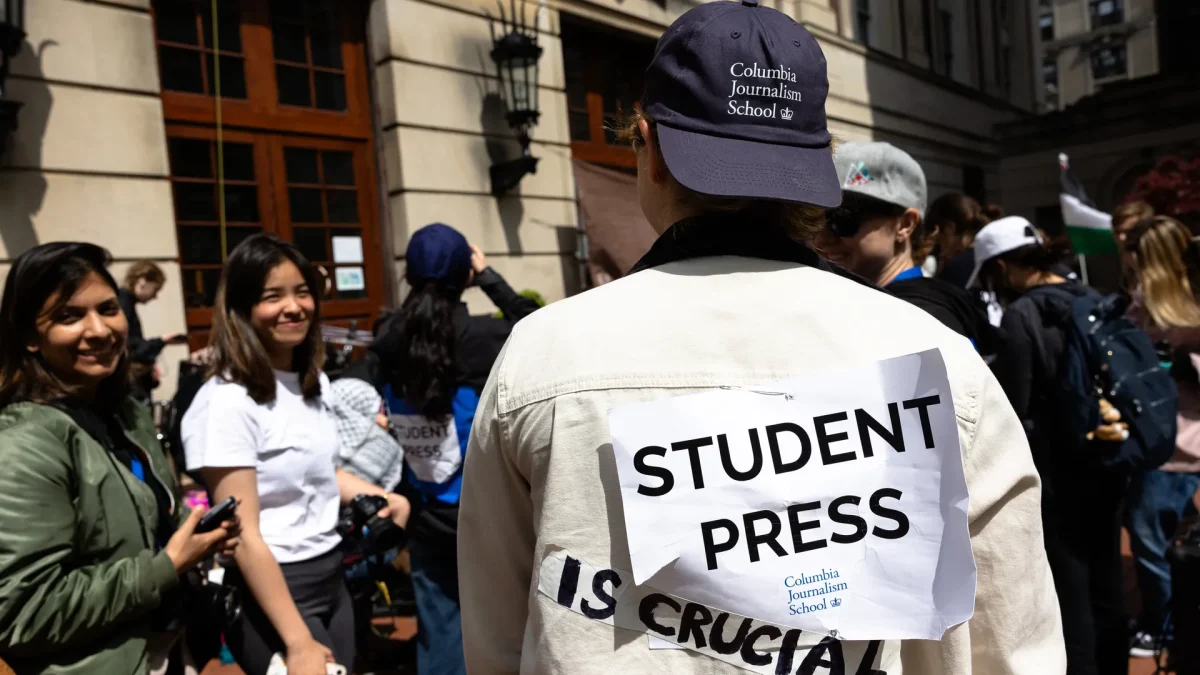


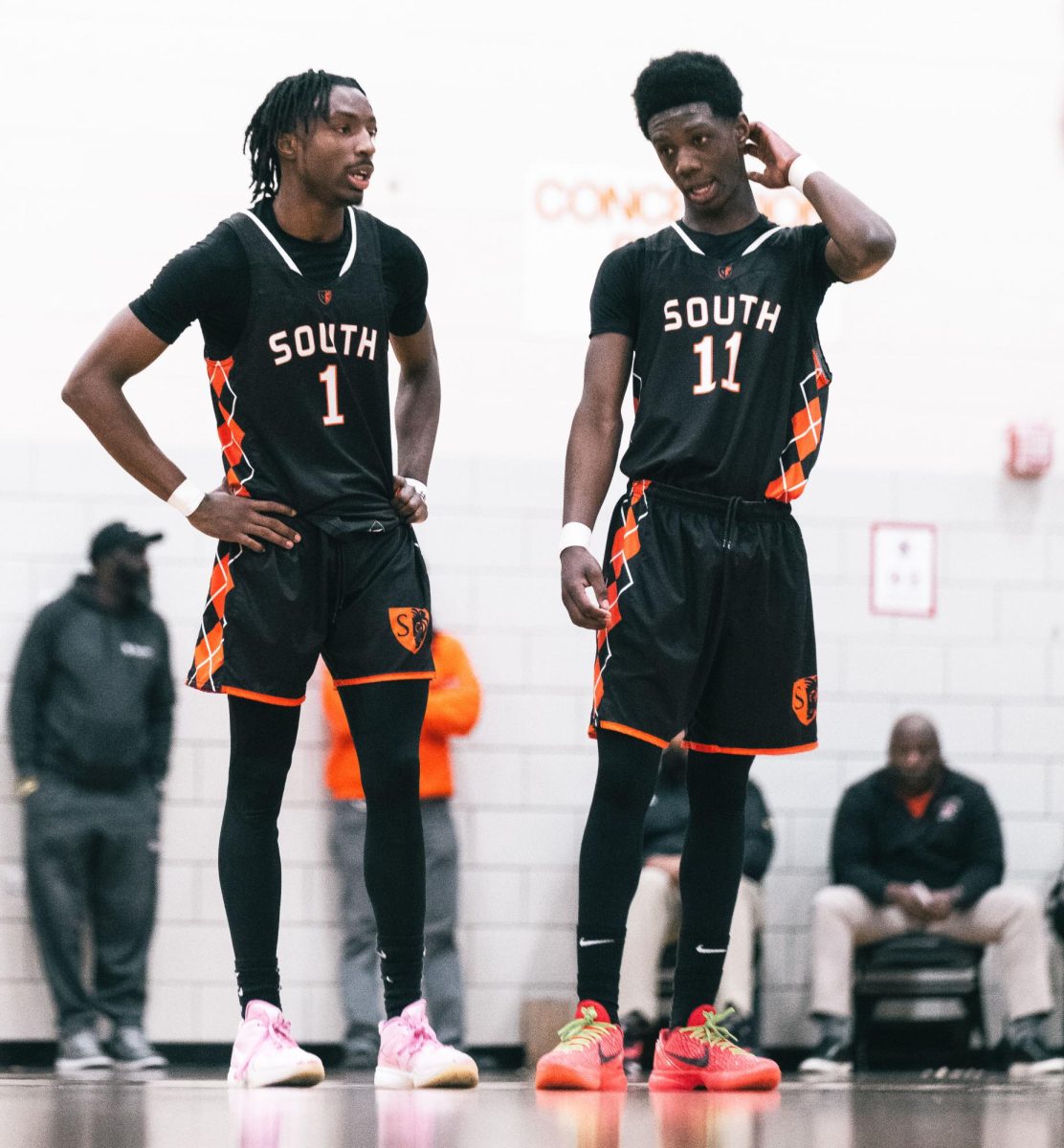

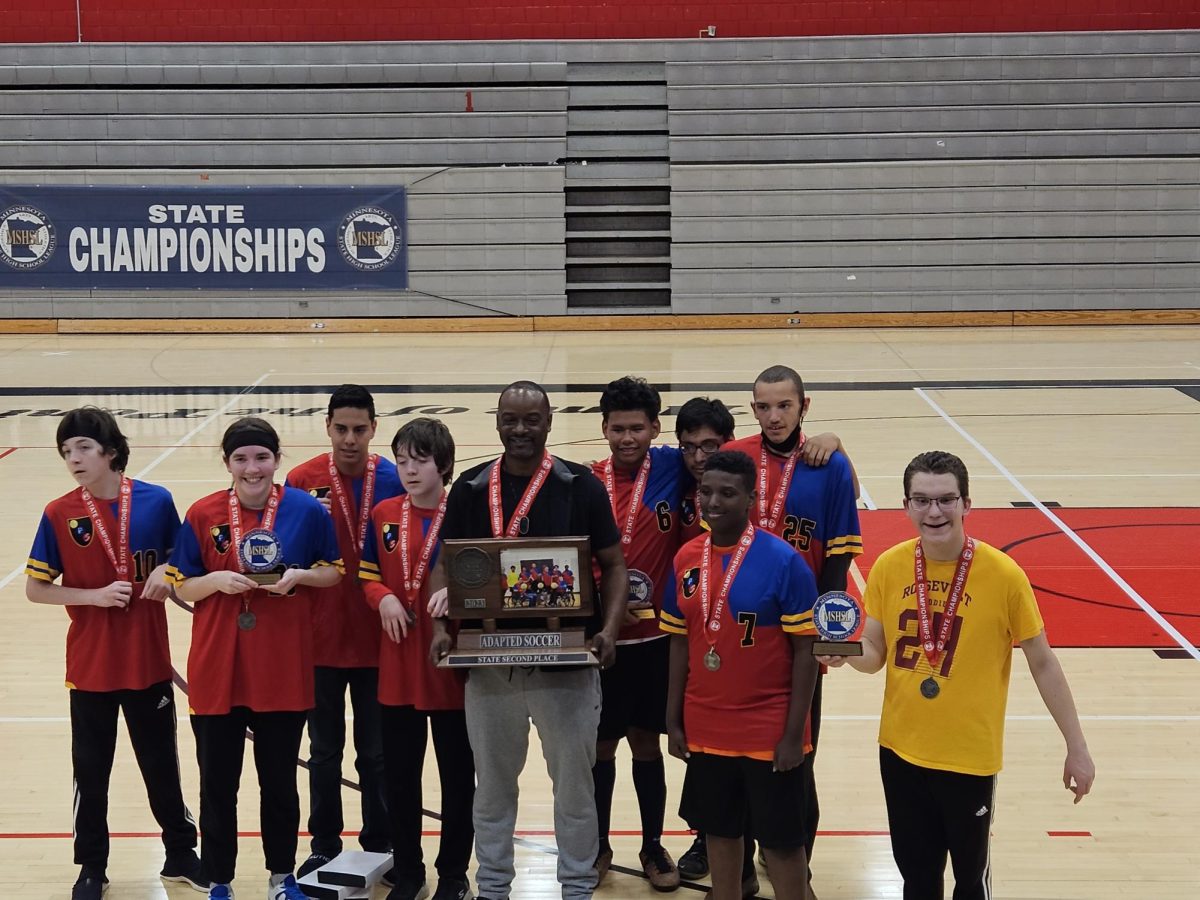

![Senior Ingrid Noren heads to school in February. She recommends winter biking, saying that “it’s better for your health [and] better for the planet.”](https://www.shsoutherner.net/wp-content/uploads/2023/03/Winter-biking-900x675.jpg)
